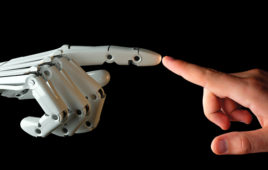A couple of important nuances of the robotics field came to my attention recently. The relationship of the actuators themselves to the robot design, and of course, the kinematic framework of the robot itself. I have some history in both areas but am regularly surprised by the way innovation continues to take place. Despite the appearance that we have reached some plateau of performance based on the existing solutions, and that further progress is marginal, man continues to change, and improve, his relationships with machines.
Actuators are a combination of mechatronic components that achieve linear or rotary motion. This isn’t always apparent because we purchase many actuators as finished products. The integration process is not easy and involves a number of technical disciplines. For many factory floor applications, it is more cost effective to purchase the actuator as a product.
But aspects of actuators such as power density and accuracy become the building blocks of more complex systems, like robots. It turns out that robots which use parallel actuators have greater power density and accuracy due to the elimination of parasitic losses that result from the way that robots are organized. This is a subtlety I missed.
On the topic of broad organization of the robot, the kinematics, there are two major families that have been defined. The robots that have been around for a while doing welding, painting and material handling tasks are generally referred to as Serial robots. They are serial in the sense that the load and forces of each axis are dependent on the axis that follows in a series, regardless of whether the axes are rotary or linear. The more axes, the more loads and error that must be compensated for in each preceding axis.
This is especially true for machining applications. Most CNC’s are serial in their framework. Its great from the control system standpoint since the axes can all be treated independently. But when the cumulative error or each axis can be measures, with an orthogonal laser system, things can be pretty well out of hand. The latest solution is a 3D compensation model added to the coordinate system of the machine. Siemens has pioneered the development of such as system and it works.
So the alternative to serial robots is parallel kinematic machines. PKM. And you can find a few really interesting examples. The now classic Delta robot available from Lenze, Siemens and others. The Lenze version recently added a rotary axis in the center line of the machine making it more versatile. Check out www.pkmtricept.com for some insights from one of the pre-eminent suppiers of parallel kinematic machines. There are also some excellent notes and applications from Physik Instrumente (www.hexapods.net). In general the hexapod topic is now dominated by 6 legged robots, which is an interesting side note, but not really the core of the technology we’re looking at, but again, it is fun to see how people continue to apply robotics in unique and interesting ways.




Tell Us What You Think!